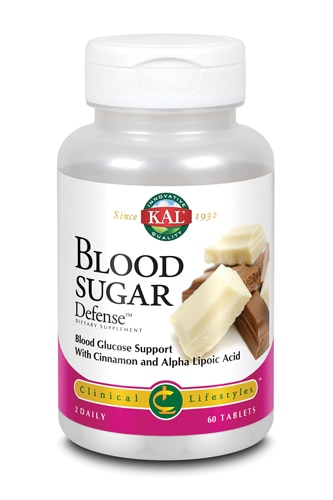Do you love to munch on pretzels, or sink your teeth into warm chocolate chip cookies? If so, buckle up: You are in for a roller coaster ride that can negatively impact your health.
Such treats – which are rich in processed carbohydrates and sugars – rank high on the
glycemic index, a tool used by nutritionists and others to categorize foods based on how quickly they cause blood sugar levels to rise.

Foods near the top of the glycemic index are quickly digested and absorbed, triggering a spike in
blood sugar. This leads to the "boom-and-bust" energy cycle familiar to millions of people who snack often.
"High-glycemic carbs typically result in that quick spike of energy -- and then that drop," says Molly Kimball, a registered dietitian and certified specialist in sports dietetics at the Ochsner Fitness Center in New Orleans.
"When we drop, we look for more of that pick-me-up," she adds.
The result can be overeating, weight gain and other health problems.
High blood sugar can damage blood vessels and nerves, eventually leading to ailments such as heart disease, kidney disease and nerve issues.
Foods that rank high on the glycemic index
Using the glycemic index to monitor food intake can help curb this negative cycle. The index ranks foods from zero to 100 based on how rapidly they cause
blood sugar levels to rise.
To measure this value, people are given a serving of food containing 50 grams of carbohydrates, minus the fiber. Then, their blood glucose levels are monitored over the next two hours, Kimball says.
Processed foods often have high glycemic index rankings. For example, pretzels come with a glycemic index reading of 83. Chocolate chip cookies rate a 64.
However, some healthful foods also have elevated glycemic index rankings. A baked potato with the skin gets a sky-high 98 out of 100 on the glycemic index.
By contrast,
foods that rank low on the glycemic index are digested and absorbed more slowly. This keeps blood sugar levels in check. Foods in this category tend to be rich in fiber, protein and fat.
Examples of such foods and their glycemic index ranking include:
- Apples -- 28
- Greek-style yogurt -- 11
- Peanuts -- 7
There are rare times – such as after a high-intensity workout – when eating a food that ranks high on the glycemic index might be beneficial, as it can aid in muscle recovery, Kimball says. But generally, people should choose lower-glycemic alternatives.
"For the most part, when we're behind the wheel of a car or behind a desk, we don't need that rapid release of energy," Kimball says.
Simple ways to reduce the glycemic impact of food
Kimball cautions that
foods lower on the glycemic index are not necessarily healthful in themselves. In fact, they can have portion sizes and calorie counts similar to their high-glycemic counterparts.
So, you must make healthful choices if you want the full benefit of a low-glycemic diet. Such choices might include eating
whole-grain bread instead of white bread.
"That is automatically going to get you a few notches lower on the glycemic index," Kimball says.
Certain fruits also are especially good choices in terms of their glycemic impact.
"Berries are my preferred fruit, because almost all berries are lower on the glycemic index scale," Kimball says.
You also can blunt the impact of a high-glycemic food by pairing it with other food choices. One example might be eating a baked potato with
foods rich in protein.
"If you have that white potato in a vacuum, it's going to have a very different effect than if you had it with lean steak and broccoli," Kimball says.
Sticking to low-glycemic foods has other benefits. Such a diet also leaves you feeling full for longer periods of time, which might keep you from overeating and gaining weight.
Research also has found that low-glycemic diets help people with type 2 diabetes improve insulin resistance, and lower glucose, cholesterol and triglyceride levels.
And Kimball notes that simply avoiding high-glycemic foods can be the first step in an overall pattern of more healthful behaviors.
"It can kind of feel like you are turning that ship in the right direction," she says.
 Foods near the top of the glycemic index are quickly digested and absorbed, triggering a spike in blood sugar. This leads to the "boom-and-bust" energy cycle familiar to millions of people who snack often.
"High-glycemic carbs typically result in that quick spike of energy -- and then that drop," says Molly Kimball, a registered dietitian and certified specialist in sports dietetics at the Ochsner Fitness Center in New Orleans.
"When we drop, we look for more of that pick-me-up," she adds.
The result can be overeating, weight gain and other health problems. High blood sugar can damage blood vessels and nerves, eventually leading to ailments such as heart disease, kidney disease and nerve issues.
Foods near the top of the glycemic index are quickly digested and absorbed, triggering a spike in blood sugar. This leads to the "boom-and-bust" energy cycle familiar to millions of people who snack often.
"High-glycemic carbs typically result in that quick spike of energy -- and then that drop," says Molly Kimball, a registered dietitian and certified specialist in sports dietetics at the Ochsner Fitness Center in New Orleans.
"When we drop, we look for more of that pick-me-up," she adds.
The result can be overeating, weight gain and other health problems. High blood sugar can damage blood vessels and nerves, eventually leading to ailments such as heart disease, kidney disease and nerve issues.



